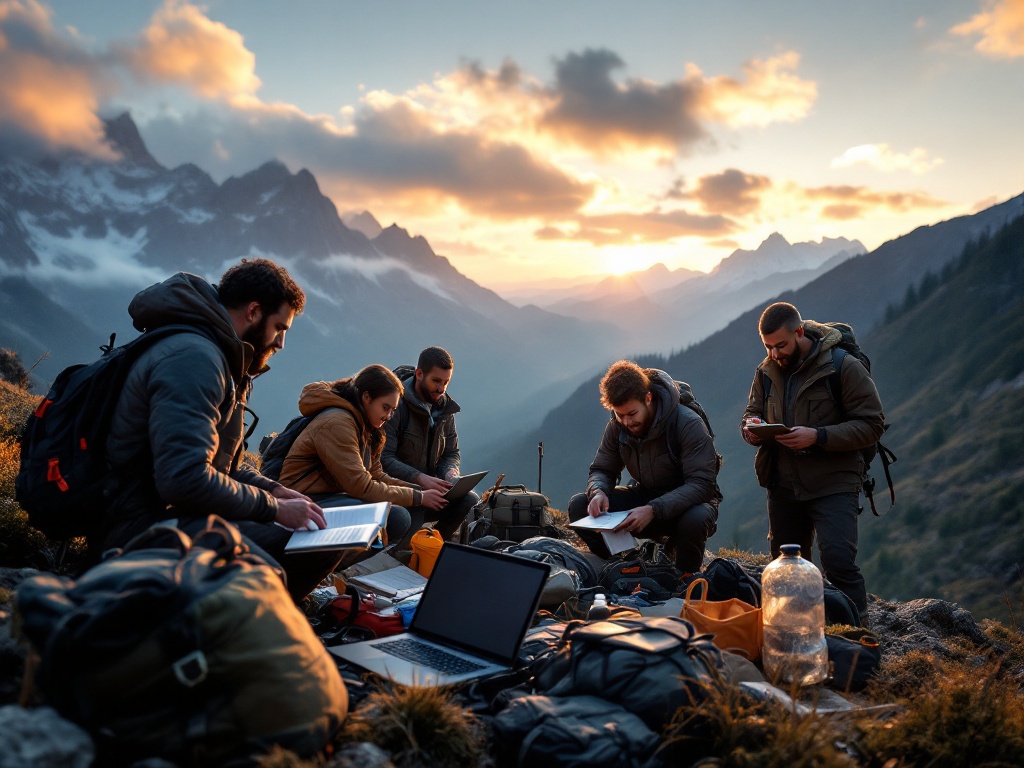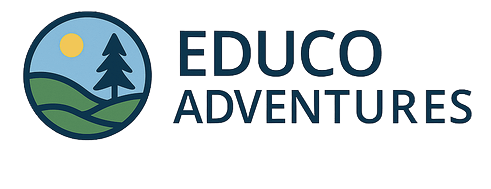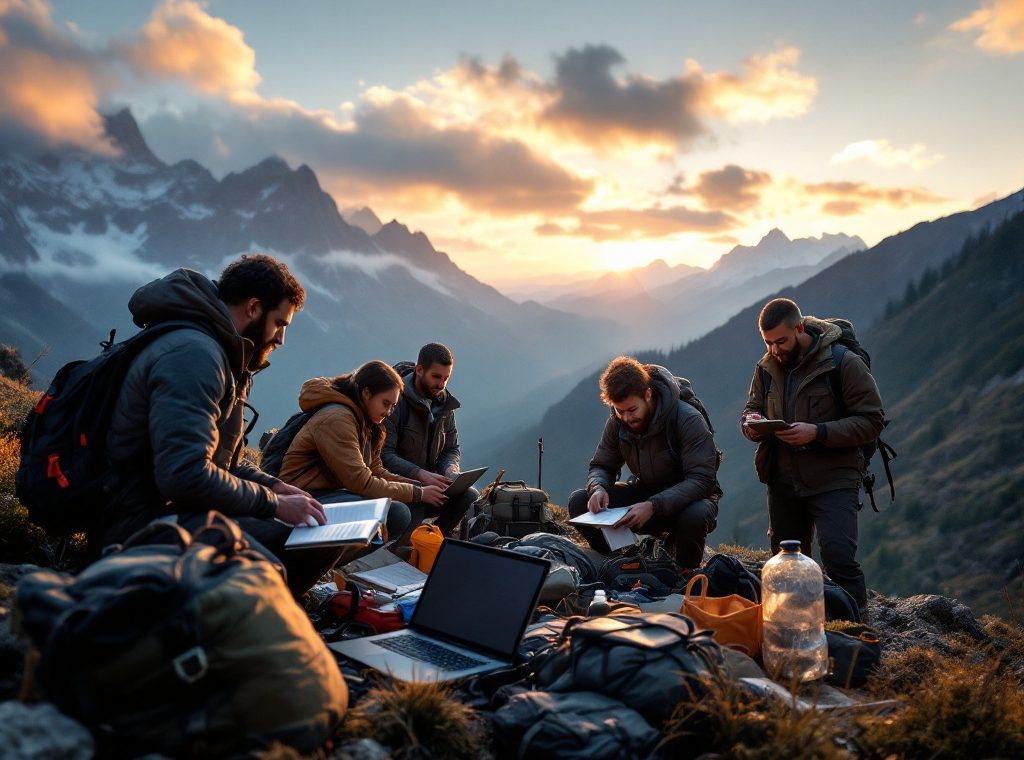Scientific Expeditions: Preparation and All Details
Embark on a journey of scientific discovery! This comprehensive guide unveils the crucial stages of planning a successful expedition, from defining clear objectives and assembling a skilled team to securing funding and managing logistics. Learn how to navigate the complexities of risk assessment, data collection, and safety protocols, especially in remote and challenging environments. Discover the essential skills, equipment, and collaboration opportunities needed to make your expedition a resounding success. Dive in and start planning your next great adventure!
Important information

- Successful expeditions require meticulous planning, including defining clear objectives, thorough research, assembling a skilled team, securing funding, conducting risk assessments, managing logistics, and obtaining necessary permits.
- Team members need diverse skills: scientific knowledge, navigation, medical training, physical fitness, technical proficiency, and potentially specialized skills like mountaineering or diving.
- Safety is paramount. Develop a comprehensive safety plan with risk assessments, training, communication protocols, evacuation procedures, and regular briefings. Essential safety gear includes first-aid kits, satellite phones, and navigation tools.
- Data collection methods include transects, quadrats, and targeted collection. Data analysis involves lab work, statistical modeling, and qualitative interpretation. Meticulous documentation and data sharing are crucial.
- Expeditions offer opportunities for groundbreaking discoveries, contributing to our understanding of Earth’s systems, climate, and biodiversity. However, they also present logistical, financial, and safety challenges.
Essential Stages of Expedition Planning
Define clear objectives for your expedition and ensure everyone involved, from the team to stakeholders, understands and agrees upon them.
Conduct thorough research. Understand the area’s ecological significance, review previous studies, and familiarize yourself with regulations and any protected zones.
Assemble a diverse team of experts whose skills complement the expedition’s aims.
Secure funding. This should cover equipment, travel, and accommodation.
Conduct a comprehensive risk assessment. Identify potential dangers and develop contingency plans.
Manage logistics. Arrange transportation, lodging, and provisions.
Obtain necessary permits to comply with regulations and respect local laws.
Understanding the Planning Phase
Meticulous planning is the cornerstone of any successful expedition, shaping its framework and objectives. This crucial phase involves several key steps: assessing potential risks, allocating necessary resources, and establishing a detailed timeline. These preparations are vital for a smooth and efficient expedition.
Expedition Goals and Objectives
Expedition goals define the overall purpose and desired outcomes. Clear goals and objectives provide direction and a framework for evaluating success, ensuring everyone understands the expedition’s purpose and can contribute effectively. This clarity is also crucial for securing funding, as it demonstrates a focused plan to potential supporters.
Objectives outline the specific, measurable, achievable, relevant, and time-bound (SMART) steps needed to reach those goals. Clear goals and objectives provide direction and a framework for evaluating success. This ensures everyone understands the expedition’s purpose and can contribute effectively.
For instance, an expedition’s goal might be to study climate change’s impact on a specific ecosystem. To achieve this, objectives could include collecting 100 water samples, surveying 50 plant species, and installing 20 temperature sensors. These measurable actions directly contribute to the overarching goal.
Identifying Critical Roles in the Expedition
The leader oversees all logistics, prioritizing the team’s safety and making critical decisions.
The medic provides essential medical care, ensuring everyone’s well-being.
The scientist/researcher gathers data, conducts experiments, and analyzes the findings to further the expedition’s scientific objectives.
Each of these roles is crucial for a successful and safe expedition.
Collaborating with Supportive Organizations
National Geographic provides grants and logistical support.
Scientific institutions, including universities and research centers, frequently collaborate, sharing expertise and resources.
Furthermore, NGOs, particularly those dedicated to conservation or research, support expeditions aligned with their missions.
The Explorers Club connects teams with seasoned members and essential resources.
Government agencies, such as the National Science Foundation, also play a crucial role by funding targeted research.
Skills and Training Required for Scientific Expeditions
Scientific Knowledge: Members need expertise directly related to the expedition’s goals.
Navigation Skills: Strong navigation abilities are essential, especially in remote locations.
Medical Training: Essential medical training, including first aid and wilderness medicine, is crucial for managing health issues in the field.
Physical Fitness: The team must have the physical stamina to handle difficult terrains and conditions.
Technical Proficiency: Members need technical skills for using equipment, collecting data, and analyzing samples.
Specialized Skills: Some expeditions require specialized skills, such as mountaineering, diving, or specific scientific techniques.
Skill Level Variation: Required skill levels depend on the expedition’s location, duration, and objectives.
Critical Skillsets for Expedition Members
Successful expeditions depend on members with a diverse skill set. Essential qualities include leadership, teamwork, and technical proficiency, along with scientific expertise tailored to the expedition’s objectives. This might involve data analysis, sample collection, or specialized equipment operation. Effective collaboration is paramount to achieving expedition goals.
Navigation and Orienteering Skills
Safe travels, especially in unfamiliar territory, rely heavily on good navigation. Planning ahead is paramount for a safe journey. A designated group member proficient in map reading and compass use is essential. This person should also be able to interpret the map in relation to the surrounding landscape. These navigational skills are key to staying on track and avoiding disorientation. This is a critical precaution, particularly in remote areas where getting lost can quickly become dangerous.
Importance of Medical Training
Expedition members need crucial medical training to prepare for potential injuries and illnesses in remote environments. This training covers essential first aid and CPR.
The training also focuses on recognizing and treating altitude sickness. It addresses environmental hazards such as hypothermia and heatstroke.
This vital knowledge ensures both participant safety and a successful mission.
Physical Fitness Requirements
Expedition members must maintain a high level of physical fitness to meet the strenuous demands of the undertaking.
Technical and Scientific Expertise
Scientific knowledge is crucial for successful expeditions, and experts play a vital role. Team members need specialized skills directly related to the research to ensure effective data collection and accurate analysis. For example, geologists contribute valuable expertise in understanding the Earth’s structure and processes, biologists offer insights into the living organisms and ecosystems encountered, and meteorologists provide essential weather information for safe and efficient operations. These experts’ combined knowledge enables reliable interpretations of findings, ultimately contributing to the expedition’s success.
Logistics and Preparation for Expeditions
Planning a successful scientific expedition requires careful attention to several key aspects. First, define clear research objectives and conduct thorough research on the chosen location. Next, assemble a skilled and diverse team with the necessary expertise. Secure sufficient funding and obtain all required permits. Finally, meticulously plan the logistics, including transportation, accommodation, and provisions. Establish robust safety protocols and backup plans to address unforeseen circumstances.
Essential Personal Gear
- Appropriate clothing for the expected conditions.
- Sleeping bag suitable for the environment.
- Comprehensive first-aid kit.
Specialized Scientific Equipment
- Sampling devices for collecting specimens.
- Measuring instruments for data acquisition.
- Data collection technology for recording observations.
- Communication equipment for staying connected.
- Navigation tools for accurate positioning.
- Safety gear for ensuring researcher well-being.
Supplies Planning and Gear Requirements
Navigation is paramount, relying on tools like GPS devices and compasses to ensure scientists stay on course.
Sampling kits are crucial for collecting specimens, contributing valuable data to the research.
Safety remains a top priority, necessitating first-aid kits and communication devices for emergencies.
Specialized instruments, such as drones, cameras, and environmental sensors, often play a key role in gathering critical information.
Personal gear, including appropriate clothing and ample food supplies, is vital for survival and a successful expedition.
Preparing for Remote Locations
Planning a successful remote expedition requires careful preparation. First, assess the environment by researching the climate, terrain, and potential hazards. This research will inform your gear choices and safety protocols. Next, obtain any necessary permits for research or access to protected areas. Finally, ensure your team is well-trained in wilderness survival, first aid, and relevant scientific techniques. These preparations will contribute to a safe and productive trip.
Assess the environment. Research the climate, terrain, and potential hazards to inform your gear choices and safety protocols.
Secure necessary permits. Obtain any required permits for research or accessing protected areas.
Train your team. Ensure your team receives training in wilderness survival, first aid, and the relevant scientific techniques.
Fieldwork Budget and Financing
Fieldwork requires funding for various aspects, including travel, accommodation, equipment, supplies, permits, insurance, and local assistance. Securing funding can be achieved through several avenues:
- grants,
- sponsorships,
- crowdfunding, and
- personal contributions.
When applying for grants, aligning your budget with the funder’s priorities can significantly improve your chances of success. Collaborations with organizations or institutions can offer access to shared resources, leading to cost savings. Thorough planning is crucial for both financial stability and the successful execution of your fieldwork.
Scientific Equipment and Tools Required
Essential equipment for scientific expeditions falls into three main categories: navigation, observation, and protection.
Navigation
Navigational tools are crucial for guiding explorers through unfamiliar terrains. Maps and compasses are fundamental for orientation and route planning.
Observation
Scientific instruments are essential for detailed observation and data collection. Key tools include cameras for recording visual data, magnifying glasses for examining small details, and binoculars for observing distant objects.
Protection
Protective clothing and gear shield scientists from the elements. This includes:
- Waterproof jackets, gloves, and hats for warmth and dryness.
- Sunscreen and insect repellent for protection against sun and insects.
- Sturdy boots for traversing challenging terrain.
The specific gear required varies depending on the expedition’s environment.
Navigational Tools: Maps and Compasses
Maps and compasses are essential tools for exploring uncharted territories, offering both guidance and security. A map reveals the terrain, while a compass keeps you on course. These invaluable tools are a must-have for any adventurer.
Scientific Instruments: Cameras, Magnifying Glasses, Binoculars
Cameras capture research data, from landscapes to individual species, documenting vital information.
Magnifying glasses allow researchers to examine tiny specimens and reveal intricate details.
Binoculars are key for observing wildlife and distant geological formations.
These tools are essential for effective field research.
Protection from the Elements: Clothing and Gear
When facing extreme weather, specialized clothing is crucial. Waterproof jackets, insulated parkas, and thermal base layers will keep you warm and dry. For footwear, choose durable hiking boots or climbing shoes, offering protection and stability on challenging terrain.
Don’t forget essential accessories. Sunglasses, hats, and gloves shield you from the elements. Sunscreen protects your skin from sun, wind, and cold. Pack rain gear for wet or cold conditions. A tent and sleeping bag are vital for warmth, dryness, and rest.
Safety and Risk Management in Expeditions
Planning
A robust plan is key to a safe expedition. It addresses potential hazards like extreme weather, wildlife encounters, and medical emergencies, preparing the team for unforeseen circumstances.
Communication and Evacuation
Essential components include readily available emergency contacts and backup plans for communication, evacuation, and resupply. This mitigates potential risks.
Risk Assessment
Thorough risk assessments are vital. They help identify location- and activity-specific hazards.
Safety Training
The team must undergo essential safety training, including first aid and wilderness survival. They also need to understand emergency response procedures.
Essential Gear
Proper gear is indispensable. This includes first aid kits, satellite phones, and navigation tools.
Regular Briefings
Regular safety briefings and check-ins throughout the expedition ensure everyone remains vigilant and prepared.
Developing a Safety Plan
Risk Assessment
Evaluate specific risks relevant to the expedition, such as health concerns, dangerous wildlife, and challenging terrain.
Training
Ensure all participants receive essential training in first aid and emergency response. This preparation is crucial for handling unexpected situations effectively.
Communication Protocols
Establish clear communication protocols using satellite phones and emergency beacons. Maintaining regular contact with base camp and external support is vital for safety.
Evacuation Procedures
Develop and rehearse clear evacuation procedures. These procedures must be easily understood and implemented in case of emergencies.
Safety Briefings and Drills
Conduct regular safety briefings and drills to maintain preparedness and ensure everyone understands the procedures.
Plan Review and Updates
Regularly review and update the safety plan to ensure its relevance and effectiveness in addressing evolving circumstances.
Emergency Contact Information and Backup Plans
Prepare an emergency contact list for each expedition member. This list should include local emergency services, embassies, and personal contacts.
Develop backup plans for communication outages, medical emergencies, and potential evacuations.
Ensure every team member can easily access these emergency contacts.
For remote locations, consider satellite phones or personal locator beacons (PLBs) as crucial communication backups.
Establish pre-determined alternative routes and extraction points in case of unforeseen circumstances such as extreme weather or natural disasters.
Research and Data Collection in Scientific Expeditions
Researchers employ various sampling methods depending on their research objectives. These methods include transects, quadrats, and targeted collection. Samples can range from rocks and fossils to water and biological specimens, such as insects, plants, and tissue samples. Analysis techniques are chosen based on the sample type and include lab work, statistical modeling, and qualitative data interpretation.
Data Collection Methods
- Transects: Researchers collect samples along a predetermined line, providing insights into species distribution and environmental gradients.
- Quadrats: Researchers define a specific area (quadrat) and collect samples within it, useful for studying species density and diversity.
- Targeted Collection: This method focuses on collecting specific samples based on research questions, often used for rare species or particular materials.
Sample Types
- Geological Samples: rocks, fossils
- Water Samples
- Biological Samples: insects, plants, tissue samples
Data analysis involves processing and interpreting information to draw meaningful conclusions. Researchers utilize statistical software and qualitative methods, meticulously documenting everything to ensure data integrity and reproducibility. Detailed records of sampling locations, methods, and analysis procedures are maintained. Data is stored securely and shared ethically.
Sample Collection and Analysis Techniques
Scientists utilize diverse collection methods, including transects, quadrats, and targeted sampling. Analysis techniques differ based on the sample type and may involve lab tests and statistical analysis. Qualitative observations offer supplementary insights. Meticulous documentation and appropriate sample preservation are crucial for preserving data integrity and guaranteeing dependable results.
Data Analysis and Documentation
Scientific expeditions depend on precise data analysis and thorough documentation. Detailed records safeguard research findings and confirm their validity. Researchers use various methods, from detailed field notes to digital tools like smartphones and tablets. Photography, GPS tracking, audio recordings, and video logs capture crucial details. Organizing this information is as important as collecting it.
Data Management in Scientific Expeditions
Researchers must systematically organize and regularly back up their data. This ensures its safety and accessibility long after the expedition ends. Thorough documentation allows other scientists to analyze the findings, reproduce and verify the results, and share them with the scientific community.
Benefits of Data Sharing
Sharing and verifying data expands overall scientific knowledge. It creates a foundation for future research endeavors. This collaborative approach strengthens the validity of scientific discoveries and promotes further exploration.
Opportunities and Challenges in Scientific Expeditions
Scientific expeditions offer invaluable opportunities to explore our planet and understand its climate. Venturing into remote environments allows scientists to gather firsthand data and make crucial observations. These journeys can reveal new species, uncover unique geological formations, and shed light on complex climate patterns.
Benefits of Scientific Expeditions
- Exploration of remote environments, allowing for firsthand data collection and crucial observations.
- Discovery of new species and unique geological formations.
- Increased understanding of complex climate patterns.
Challenges of Scientific Expeditions
- Logistical hurdles in transporting equipment and maintaining communication in remote areas.
- Difficulty in securing adequate funding for research.
- Unpredictable weather, equipment malfunctions, and health risks.
Despite these obstacles, scientific expeditions remain crucial for advancing our understanding of the world. Their potential for groundbreaking discoveries makes them invaluable, and the benefits ultimately outweigh the challenges.
Exploring Expedition Opportunities
Scientific expeditions provide crucial research opportunities in remote, vital ecosystems, furthering fields like biology, geology, and environmental science. Researchers choose locations based on factors such as research goals, available resources, and the ecological or geological importance of the area. Accessibility, environmental conditions, and potential risks are also key considerations. Local partnerships and collaborations with researchers and institutions often enhance these efforts. Thorough preparation, including reviewing past studies and existing data, is essential for informed location choices. Researchers also navigate legal restrictions, such as those in protected areas, and secure necessary permits.
Define Research Goals. Clearly established research objectives guide the selection of an appropriate expedition location.
Assess Resource Availability. Consider logistical factors like funding, equipment, and personnel required for the expedition.
Evaluate Ecological and Geological Significance. Prioritize locations with high ecological or geological value relevant to the research objectives.
Consider Accessibility and Environmental Conditions. Factor in logistical challenges, climate, and potential hazards at the chosen location.
Establish Local Partnerships. Collaborate with local researchers and institutions to gain valuable insights and support.
Conduct Thorough Preparation. Review past studies, analyze existing data, and secure necessary permits for the expedition.
Impact on Earth Sciences and Climate Research
Expeditions to remote regions offer invaluable benefits to our understanding and protection of the planet. They gather essential data on geological formations, biodiversity, and climate, which helps refine geological models and improve climate predictions. Research on glaciers and ice cores is particularly important, as it reveals past climate shifts and aids in projecting future trends. These expeditions are crucial for informing conservation efforts and resource management strategies, allowing for a deeper understanding of Earth and its preservation.













